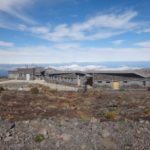
Fostering research excellence
in EU Outermost Regions


Fostering research excellence
in EU Outermost Regions

La Reunion
Infrastructure
OPAR is the Observatory for Atmospheric Physics in Reunion, and includes :
– the Maïdo atmospheric observatory at an altitude of 2160m
– observation rooms on the Moufia university campus, the Gillot meteorological station and the Météo-France site.
OPAR’s research topics are linked to the study of atmospheric processes, climate
and climate change. All the characteristics of OPAR’s geographic situation (southern hemisphere, subtropical zone, in the west of the Indian Ocean basin, altitude of 2160m, on the leeward side of the island) are assets, making OPAR a strategic and internationally-important atmospheric observatory.
OPAR’s partners work on several major research programmes to improve our
understanding of tropical atmospheric processes and climate change :
– stratospheric ozone layer : tracking patterns and restoring the ozone layer in the tropics and meridian transfer processes
– stratospheric aerosols : origins, radiation and chemical impacts, monitoring trends
– composition and dynamics of the UTLS (Upper Troposphere Lower Stratosphere) zone : roles of ozone, water vapour and species with short lifespans
– large-scale movements of atmospheric pollutants into the troposphere :
origins, radiation and chemical impacts, monitoring of patterns
– atmospheric convection and tropical cyclogenesis processes
– ocean-atmosphere and biosphere-atmosphere interactions : roles of marine and biogenic aerosols
OPAR is made up of a number of technical support centres.
The Moufia atmospheric station on the university campus host a number of instruments for monitoring atmospheric composition :
two spectrometers in the IR and UV solar radiation ranges, a radiometer for the total ozone column, a photometer and a lidar for atmospheric aerosol profiles, an instrument for in-situ greenhouse gas measurements (CO2, CH4, H2O).
Collaboration with Météo-France , we were granted the opportunity to use the Gillot station being used to carry out weekly radio probes of ozone and meteorological parameters.
Lastly, since late 2012, the Maïdo atmospheric observatory, which sits at an altitude of 2160 m, has hosted a wide-ranging collection of instruments.
Other instruments provide data on electric cloud activity in the Indian Ocean basin : a VHF antenna is part of a global network to detect and localise lightning, while an ultra-rapid and sensitive camera detects transitory light events between the summits of convective clouds and the upper atmosphere.
OPAR’s research topics are linked to the study of atmospheric processes, climate
and climate change. All the characteristics of OPAR’s geographic situation (southern hemisphere, subtropical zone, in the west of the Indian Ocean basin, altitude of 2160m, on the leeward side of the island) are assets, making OPAR a strategic and internationally-important atmospheric observatory.
OPAR’s partners work on several major research programmes to improve our
understanding of tropical atmospheric processes and climate change :
– stratospheric ozone layer : tracking patterns and restoring the ozone layer in the tropics and meridian transfer processes
– stratospheric aerosols : origins, radiation and chemical impacts, monitoring trends
– composition and dynamics of the UTLS (Upper Troposphere Lower Stratosphere) zone : roles of ozone, water vapour and species with short lifespans
– large-scale movements of atmospheric pollutants into the troposphere :
origins, radiation and chemical impacts, monitoring of patterns
– atmospheric convection and tropical cyclogenesis processes
– ocean-atmosphere and biosphere-atmosphere interactions : roles of marine and biogenic aerosols
OPAR is made up of a number of technical support centres.
The Moufia atmospheric station on the university campus host a number of instruments for monitoring atmospheric composition :
two spectrometers in the IR and UV solar radiation ranges, a radiometer for the total ozone column, a photometer and a lidar for atmospheric aerosol profiles, an instrument for in-situ greenhouse gas measurements (CO2, CH4, H2O).
Collaboration with Météo-France , we were granted the opportunity to use the Gillot station being used to carry out weekly radio probes of ozone and meteorological parameters.
Lastly, since late 2012, the Maïdo atmospheric observatory, which sits at an altitude of 2160 m, has hosted a wide-ranging collection of instruments.
Other instruments provide data on electric cloud activity in the Indian Ocean basin : a VHF antenna is part of a global network to detect and localise lightning, while an ultra-rapid and sensitive camera detects transitory light events between the summits of convective clouds and the upper atmosphere.